- Home
- Encyclopedia
- The Cheyenne Homecoming
The Cheyenne Homecoming
The Northern Cheyenne were among tribes attacked by Custer and his ill-fated command at the Little Bighorn in June 1876—a great victory for the Northern Cheyenne, Lakota Sioux and others of the northern plains. But disaster came five months later for the Northern Cheyenne, when their main camp was again attacked, in a secluded valley in the southern Bighorn Mountains by U.S. troops under General George Crook. This time the Cheyenne were routed.
Driven from their homes, the survivors of the attack fled into the frigid mountains where they lived for two weeks on little more than horse meat. A few months after coming out of the mountains, they divided into two groups and surrendered to White authorities. One group, led by Two Moons and White Bull, traveled to the new Tongue River Cantonment at the confluence of the Tongue and Yellowstone Rivers near present day Miles City, Mont., where General Nelson Miles was post commander. The other, larger group, led by Little Wolf and Dull Knife, traveled to the Red Cloud Agency in northwest Nebraska, where General Crook was in charge.
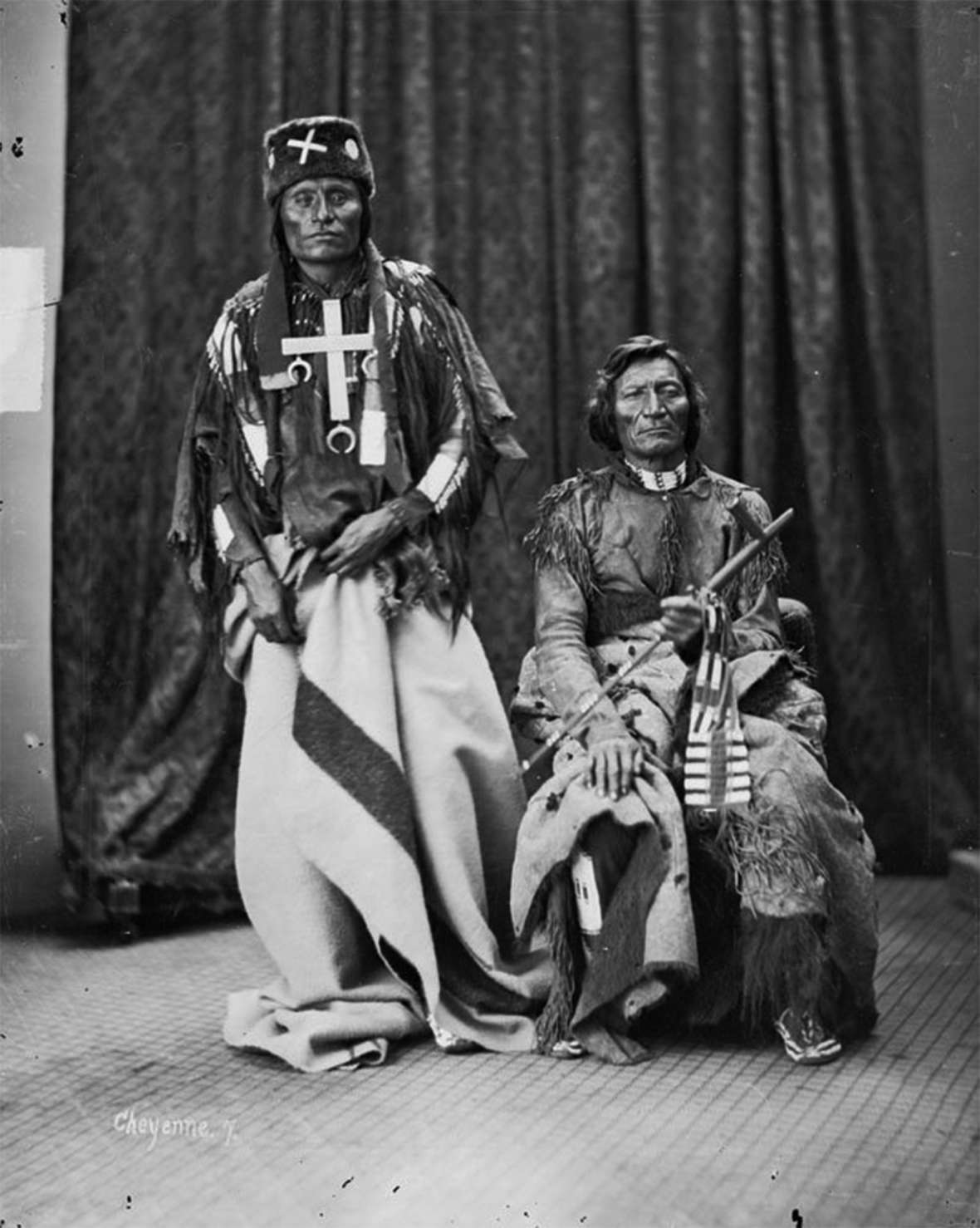
Crook initially promised Little Wolf and Dull Knife that they would be able to stay at the agency for at least a year. However, his superiors in Washington ordered Crook to take them south to Indian Territory—present Oklahoma—to live with their relatives, the Southern Cheyenne.
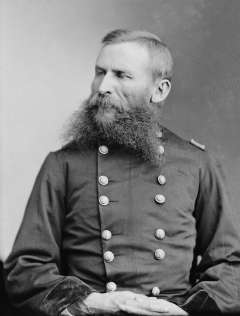
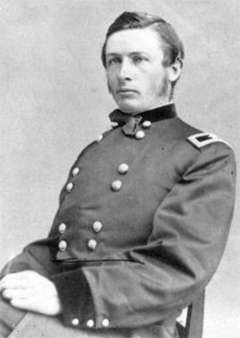 |
Little Wolf and Dull Knife opposed the move. But Crook and his second in command, Col. Ranald Mackenzie, persuaded certain “agency Indians” who had lived at Red Cloud since it had been established, and one influential leader named Standing Elk, who had surrendered with Little Wolf and Dull Knife, to agree. Crook and MacKenzie promised that if they didn’t like the place after a year, they could return north. To everyone’s surprise, Standing Elk agreed, committing the 937 Northern Cheyenne at the Red Cloud Agency to the move.
The Darlington Indian Agency was about 700 miles south of Fort Robinson as the crow flies; 30 miles west of what would eventually become Oklahoma City. It was also hotter, more humid and more barren than the Northern Cheyenne homeland.
At the Darlington Agency
Approximately 35 of the travelers slipped away from the group on their way south; the rest arrived in August 1877. The agent, John D. Miles, welcomed those who completed the trip, fully expecting them to abandon their traditional ways and embrace an agrarian lifestyle. He was sorely disappointed when nearly a third of them, led by chiefs Little Wolf and Dull Knife, began to express their dissatisfaction with their new agency, and their unwavering desire to return home. Miles refused to let them go.
The strange diseases of measles and malaria plagued the new arrivals, while at the same time they realized the agency’s already skimpy food supply had been overburdened by their presence. Because of their added numbers, medication quickly became unavailable while the rations were always meager and of poor quality. To make matters worse, Miles often withheld the rations as punishment when they refused to take up farming or to send their children to the agency school.
In addition, many of their southern relatives had begun to harass them. Some wanted them to cooperate more with the agent and his helpers, while others simply resented their presence, often chiding them openly and telling them to leave. Some of the southern people called them Sioux, because they had arrived wearing hides and feathers, while the southern tribes had adopted the clothing worn by Whites. During their time at the southern agency, nearly 50 of the northerners died of the terrible illnesses and simple starvation. A year passed.
A departure for the north
After a series of contentious and unsuccessful negotiations where both he and Dull Knife tried to convince agent Miles to allow their people to return to the north, Little Wolf informed Miles and Major J.K. Mizner, the commander of nearby Fort Reno, that he and his band would be leaving. He spoke pointedly: “My friends, I am going to my camp. I do not wish the ground about this agency to be made bloody, but now listen to what I say to you, I am going to leave here. I am going north to my own country. I do not wish to see blood spilled about this agency. If you are going to send your soldiers after me, I wish that you would first let me get a little distance away from this agency. Then if you want to fight, I will fight you, and we can make the ground bloody at that place.”
The Cheyenne leaders returned to their camp, which soldiers had already been watching for several days. The morning after the confrontation the soldiers were surprised to discover that the Cheyenne were gone. They had packed their belongings, left their lodges standing and their fires burning, then quietly slipped over the top of a hill behind camp, climbed onto a herd of horses their young men had been stealing from around the agency for several weeks and left for their homeland while the soldiers slept.
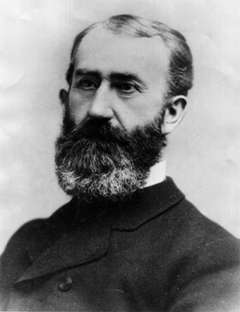
There were 350 runaways. Ninety-two were men of fighting age, while the remaining 261 were women, children and elderly. Each was resolved that it was far better to die trying to return home than to stay and resign themselves to a pitiful death from disease or starvation.
It took the humiliated soldiers three days to catch up with the runaways, in the hill country of northern Indian Territory at a place called Turkey Springs. When they arrived, on Sept. 13th, Little Wolf was waiting and had prepared for a confrontation. The soldiers ran headlong into a box canyon, presented the Cheyenne with another ultimatum and, after firing the first shot, quickly found themselves trapped under deadly fire from the surrounding hills with very little cover and no water. The soldiers were pinned down for a full day, lost three of their number, and had resorted to drinking horse urine for fluid before they could retreat. Five Cheyenne were wounded during the fight.
When the soldiers left, the Cheyenne slipped across the Indian Territory border and rode into the cattle country of southern Kansas. After failed attempts to trade with ranchers for fresh horses and cattle, Little Wolf had little choice but to change his tactics. He knew the soldiers they had defeated earlier had regrouped and were again pursuing them. He also was aware that the officers at Fort Dodge, just outside of Dodge City, 65 miles to the north, were likely planning to try to intercept them before they crossed the nearby Arkansas River.
The Cheyenne would not be able to survive their trek north without fresh horses and food to sustain them, but the soldiers were close. Little Wolf opted to mobilize his own forces, intending to create conflict instead of avoiding it; to cause as much chaos as possible throughout the area to confuse their pursuers.
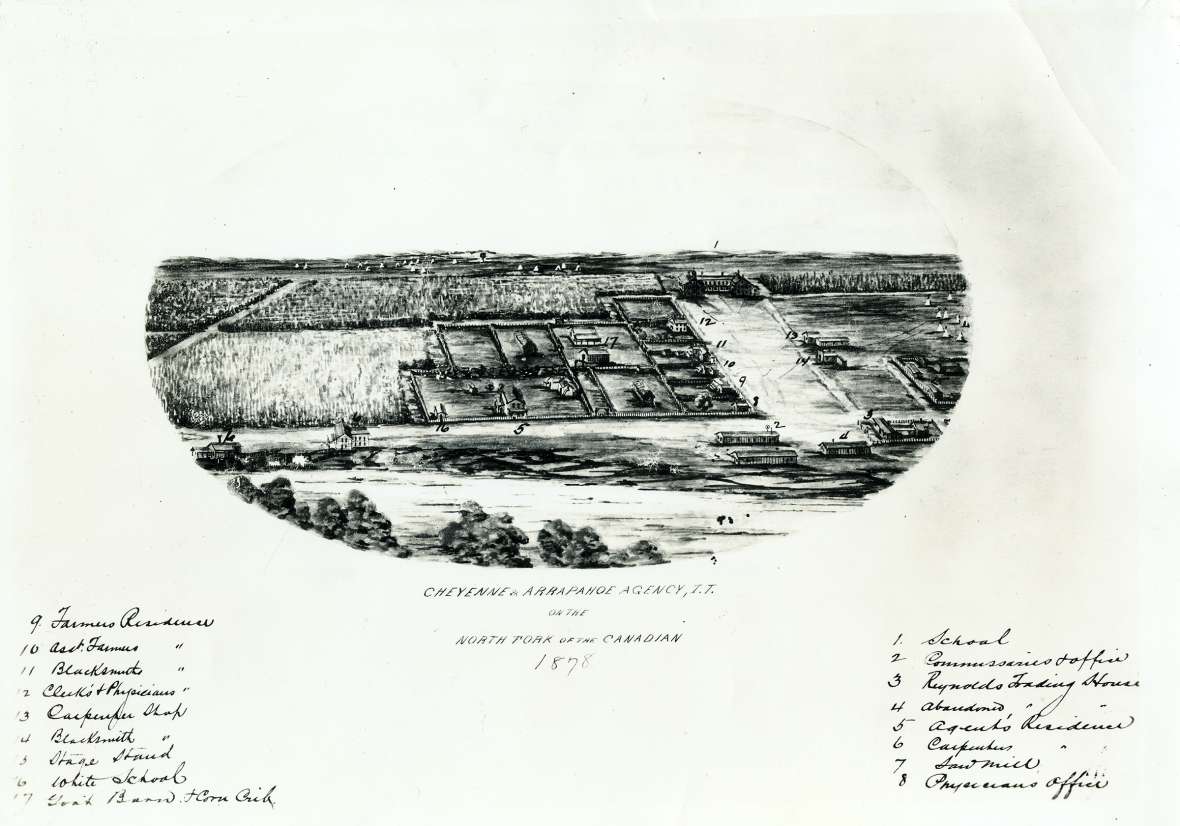
Raids
The young men with the band spread out and began raiding ranches to obtain fresh mounts and food for their party. It’s believed that while this was taking place, the women, children and elders were ushered to a secluded spring to rest and wait for the arrival of their fresh provisions before the next push north. For a full week after the fight at Turkey Springs, the Cheyenne raced through a 250 square mile area in south central Kansas, stealing much-needed horses and cattle, along with whatever guns, ammunition and other useful provisions they could find.
Local newspapers documented the clashes and depicted how sudden and scattered they were. Despite Little Wolf’s admonitions to avoid unnecessary bloodshed, several ranch hands were killed in the raiding. Once the initial strikes were reported in Dodge, townspeople and ranchers joined the army in their efforts to track down and capture the small bands of raiders. As pressure grew over the course of the week, the scattered raiding parties joined back together to fend off the angry locals at a place called Bluff Creek. Two days later the army again joined with the locals for another fight at a place called Sand Creek. The Cheyenne again fought them off while their bounty was spirited away to those who waited at the hidden spring.
Once their families and freshly gathered provisions were safely out of the area, the fighting men split up and disappeared into the prairie to join them. Some accounts have the band crossing the Arkansas River about 25 miles west of Dodge City on Sept. 23, 1878, while others have them crossing on the 24th. Regardless of the date, the Cheyenne were again well-provisioned and moving north at a remarkable speed for a group laden with so many families and protected by so few fighting men.
A failed ambush on Punished Woman’s Fork
After subordinate officers had repeatedly failed to apprehend the Northern Cheyenne, Lt. Col. William H. Lewis, commander at Fort Dodge, was called into the field to capture the band of “renegades.” He left Fort Dodge with approximately 240 soldiers and caught up with the Cheyenne 80 miles northwest of Dodge City in a canyon called Punished Woman’s Fork.
The Cheyenne had arrived at the canyon two days before the soldiers and, as they had at Turkey Springs, had taken advantage of the opportunity to rest and to prepare a surprise for their pursuers. But Little Wolf’s ambush was foiled this time when an anxious Cheyenne youth prematurely fired his rifle at the army scouts before they entered the trap.
Lt. Col. Lewis was fatally wounded in the ensuing battle, causing the soldiers to withdraw, but not before they captured and destroyed all the horses and provisions the Cheyenne had recently acquired. That night, the Cheyenne slipped away, racing north with most of their party on foot. In the course of their escape, Quiet One, one of Chief Dull Knife’s wives, was killed by one of the few remaining horses when it spooked and trampled her. Quiet One was loved by many and the band paused briefly to bury her in haste.
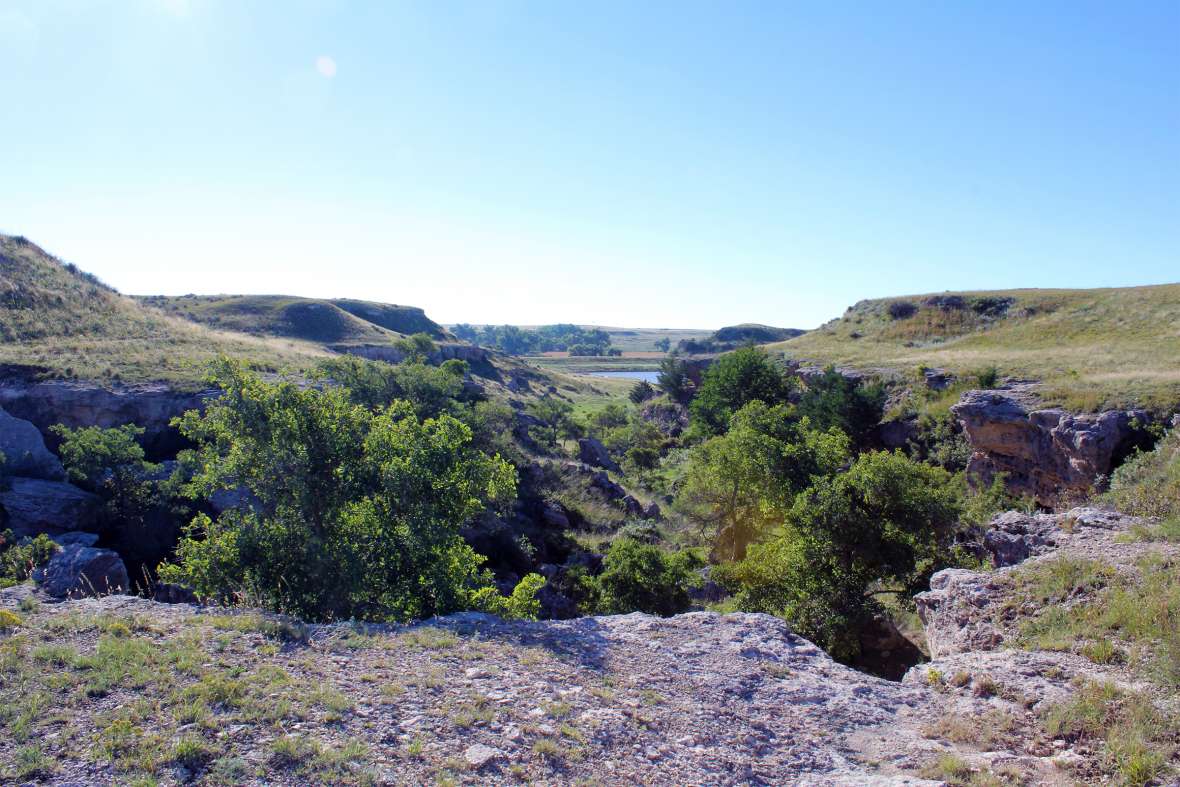
More raids, and bloodier
Three days later, after an 80-mile hike, they traveled into familiar terrain: the southern tributaries of the Republican River in northwest Kansas. The hillsides along the Prairie Dog, Sappa, and Beaver Creeks had once rumbled under the hooves of thousands upon thousands of buffalo, traditionally the Cheyenne’s primary source of food. In recent years, buffalo hunters had nearly exterminated the animals. Small sod houses, barns and plowed fields of hundreds of new settlers now lined the creek bottoms and hillsides. All recent arrivals, they had quickly claimed the land as their own.
Little Wolf again sent bands of young men out to raid up and down the creeks. He again instructed them to avoid any unnecessary killing, but this time the young men were less inclined to listen. In addition to witnessing the invasion of their once favorite hunting grounds by settlers, they had also suffered the recent losses of Quiet One and their previously hard-won spoils. These only added to their anger over the harassment by U.S. troops in 1876, the destruction of their camp in the Bighorns, their exile to Indian Territory and their subsequent mistreatment there.
Also different was the fact that they were not dashing across sprawling cattle ranches stubbornly defended by armed ranch hands and hustling squads of soldiers. Instead, they encountered clusters of unarmed farmers with women and children nearby, all going about their daily routines. This time, the young Cheyenne men released their bitterness, borne from years of oppression, with a horrible vengeance.
It took the Cheyenne three days to cross the three tributaries of the Republican River. In those three days the young men killed more than 40 male settlers and raped at least nine women and girls. Little Wolf and older leaders had remained with the main portion of the band this time and, when interviewed in later years, claimed to have known nothing about the heinous acts that took place.
Considering the amount of booty brought in by the raiders, many historians have questioned how they could not have known. Others have suggested that just a few of the young men were involved in the atrocities, which made them easier to hide.
The raiding parties rejoined the main band and crossed the Republican River. They continued north another 70 miles and crossed the main stem of the Platte River five miles west of Ogallala, Neb. After the Platte crossing they were home, but not home safe. Four companies of soldiers were still pursuing them and another four were about to join the chase. The Cheyenne slipped into the familiar sand hills of Nebraska and, while the exact location is uncertain, Little Wolf and Dull Knife decided to divide their party for the last time.
The band divides
After the separation, Little Wolf decided to spend the winter of 1878-79 in the sand hills with his remaining party of 123 before resuming their trek north in the spring. By contrast, Dull Knife, at nearly 70 years old, was weary. He had lost a son at the Little Bighorn, another son and grandson five months later during the attack in the Bighorn Mountains and just recently his wife, Short One. He wanted to believe that the 149 who followed him could slip in among the 7,000 Lakota at the Red Cloud Agency along the White River and be quietly absorbed into their numbers.
But the old chief didn’t know that while the Cheyenne were in the south, the Red Cloud Agency had been moved some 60 miles northeast, to Dakota Territory. Fort Robinson, a military outpost, was all that remained in the location he was heading to. In a blinding October snowstorm shrouding the already maze-like sand hills, Dull Knife’s band and an army patrol from Fort Robinson, who had been alerted and were searching for them, nearly walked into each other. After a tense two-day negotiation in which they were told that the Lakota had been removed from their old agency, Dull Knife and his band reluctantly agreed to surrender and go to Fort Robinson.
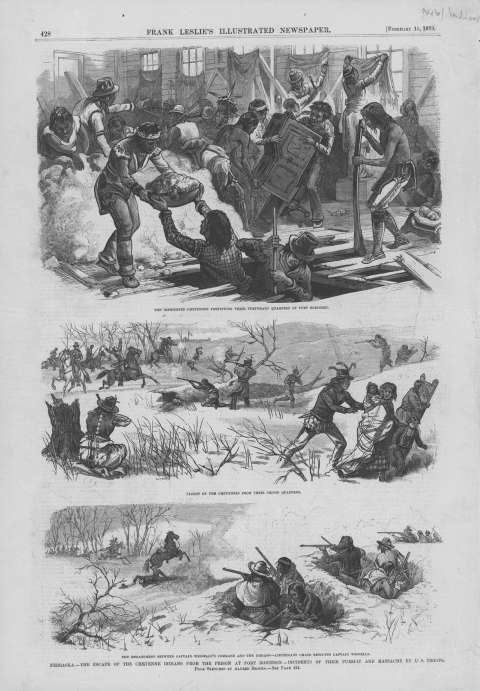
For the next two months the Cheyenne were housed in a log cavalry barracks, fed regularly and treated well. However, the post commander, Capt. Henry W. Wessells Jr., pressured them to agree to return to the Darlington agency in Indian Territory. Dull Knife’s blunt response was always, “No, I am here on my own ground, and I will never go back. You may kill me here; but you cannot make me go back.”
The breakout
Frustrated, Wessells eventually confined them to the barracks. The Cheyenne responded by boarding up the windows from the inside. Fearing they might be attacked, the Cheyenne rebuilt guns they had taken apart earlier. The women and children had hidden these gun parts in their clothing and on their bodies before they arrived at Fort Robinson. On Jan. 5, 1879, Wessells ordered food and firewood for the Cheyenne discontinued to try to force them to comply. On Jan. 8, when they still refused, he stopped providing water. On the night of Jan. 9, 1879, the Cheyenne broke out of their prison barracks and ran for their lives.
They shot guards through openings on a moonlit night with six inches of snow on the ground. Soldiers streamed out of other barracks when the first shots sounded and began firing indiscriminately at the running Indians. Several Cheyenne men fell back and formed a skirmish line to hold the soldiers but were unsuccessful.
The Cheyenne ran west, along the White River, trying to stay in the dark shadows cast by the full moon onto the white snow. The plan was to go to a nearby ranch and steal as many horses as possible, but the soldiers were on them too quickly. They were forced to climb up into some tall sandstone bluffs four miles west of the fort. During their flight between the barracks and the bluffs, 35 men, women and children were killed.
Those who made it over the bluff were pursued for two weeks. After one altercation, the soldiers left the field and returned to Fort Robinson. The starving Cheyenne hurriedly butchered a cavalry mount that had been killed in their scrape and continued their run. When a horse was killed in a subsequent altercation, the soldiers burned it before leaving.
Capt. Wessells was with the party that finally trapped the runaways in an old buffalo wallow on Antelope Creek, in the far northwestern corner of Nebraska, 35 miles northwest of Fort Robinson. The 37 Indians still refused to surrender, so Wessells ordered his soldiers to fire into the wallow until nothing moved. Twenty-five bodies were pulled from the pit. Amazingly, one man and 11 women and children initially survived the onslaught, but the male, one of the women, and a child died from their wounds the following day.
Dull Knife survives
During the escape, two of Dull Knife’s daughters and another son were killed. The old chief himself managed to evade capture with a small party that included his remaining wife, Pawnee Woman, and his son, Hump. They had separated from the others early by running east instead of west. They traveled at night for two weeks until they came to the home of a White friend who helped them get to the new Red Cloud agency, now called the Pine Ridge agency. When they arrived, friends and relatives built them a lodge in a remote area where they could recover from their ordeal. They were eventually joined by the other survivors of the massacre at Fort Robinson.
The following spring, Little Wolf’s band left the sand hills and traveled an old Indian trail along the Black Hills, though the northwest corner of Wyoming Territory, then north to the confluence of the Powder and Yellowstone Rivers in Montana Territory. They were discovered there by scouts for Lt. William P. Clark, a friendly officer they knew from Fort Robinson two years prior. Clark convinced Little Wolf to surrender at the Tongue River Cantonment, now called Fort Keogh, where Two Moons and White Bull and their people had been allowed to stay since the spring of 1877.
Regional journalists had documented the Cheyenne flight from Indian Territory and by the time Little Wolf surrendered at Fort Keogh, support for their cause had grown. President Chester A. Arthur eventually issued an executive order establishing what was first called the Tongue River Agency in southeastern Montana. It later became the Northern Cheyenne Indian Reservation. There, Dull Knife and the Northern Cheyenne at the Pine Ridge Agency, as well as those who wished to of the nearly 600 who had remained at the Darlington Agency in the south, were allowed to settle.
Nearly 150 years after their desperate escape and successful homecoming, the descendants of Little Wolf, Dull Knife and all those who traveled with them continue to celebrate and acknowledge their tremendous sacrifice and heroic efforts to reclaim their beloved homeland in the northern plains.
Editor’s note: WyoHistory.org thanks the American Heritage Center at the University of Wyoming for support that made publication of this article possible.
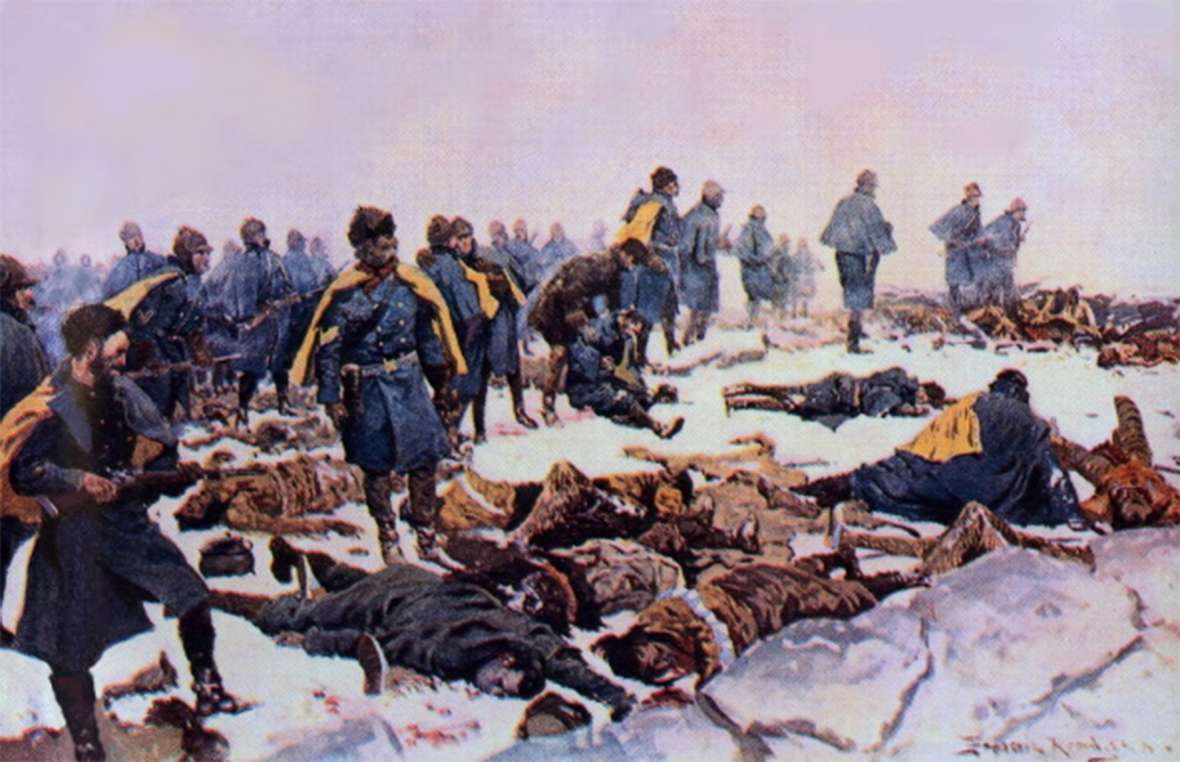
Resources
Sources
- Grinnell, George B. The Fighting Cheyenne. Civilization of the American Indian Series. Norman, Okla.: University of Oklahoma Press, 1983. Originally published in 1915, this early, definitive work on Cheyenne culture describes their friendly and wartime interactions with other tribes as well as with U.S. soldiers.
- Leiker, James N., and Ramon Powers. The Northern Cheyenne Exodus in History and Memory. Norman, Okla.: University of Oklahoma Press, 2011. A thoroughly researched if somewhat overly interpreted look at the historical, societal and judicial impacts of the journey taken by the Northern Cheyenne to reclaim their homeland.
- Monnett, John H. Tell Them We Are Going Home. Norman, Okla.: University of Oklahoma Press, 2004. A balanced and thorough review, from several perspectives, of the events leading up to the Cheyenne escape, the journey itself and aftermath. Well-written and authoritative.
- Powell, Peter J. People of the Sacred Mountain: A History of the Northern Cheyenne Chiefs and Warrior Societies, 1830-1879. Vol. 2, pt. 4. New York: Harper Collins, 1981. A meticulous rendering of Northern Cheyenne history told in short episodes originally passed through the generations via oral tradition and detailing everything from anecdotes to important historical events.
- Sandoz, Mari. Cheyenne Autumn. New York: McGraw-Hill, 1953. Born and raised in the country presented in the book, Sandoz uses primary sources to provide the first rendering of this story from the Native perspective. Ground-breaking at the time it was written, it remains one of the most referred to sources for information on this story.
For further reading and research
- Bristow, David L. “Bloodshed at Fort Robinson and our newest historical marker.” History Nebraska blog, accessed April 22, 2020 at https://history.nebraska.gov/blog/bloodshed-fort-robinson-and-our-newest-historical-marker.
- Powers, Ramon and James M. Leiker, eds. “Remembering the Battle of Punished Woman’s Fork: Proceeds from the 2013 Scott City Symposium.” Kansas History 38, no. 4, accessed April 21, 2020 at https://www.kshs.org/publicat/history/2015winter_powers.pdf. A series of articles on the exodus of the Northern Cheyenne, the fight at Punished Woman’s Fork and related issues.
Illustrations
- The photo of Little Wolf and Dull Knife is from firstpeople.us. Used with thanks.
- The photos of George Crook, Ranald MacKenzie and John D. Miles are from Wikipedia. Used with thanks.
- The bird’s-eye view of the buildings and fields at the Darlington Agency in Indian Territory, 1878, is courtesy of Western History Collections, University of Oklahoma Libraries, W.S. Campbell 2030.
- The photo of the site of the fight on Punished Woman’s Fork in western Kansas is by the author. Used with permission and thanks.
- The illustration of the Cheyenne preparing to break out of the Ft. Robinson barracks was originally published in Frank Leslie’s Illustrated Newspaper, Feb. 15, 1879. We found it on Nebraska History. Used with permission and thanks.
- Frederic Remington’s illustration, “The Pit,” first appeared in Harper’s New Monthly Magazine in 1897. This image is from Wikipedia. Used with thanks.
